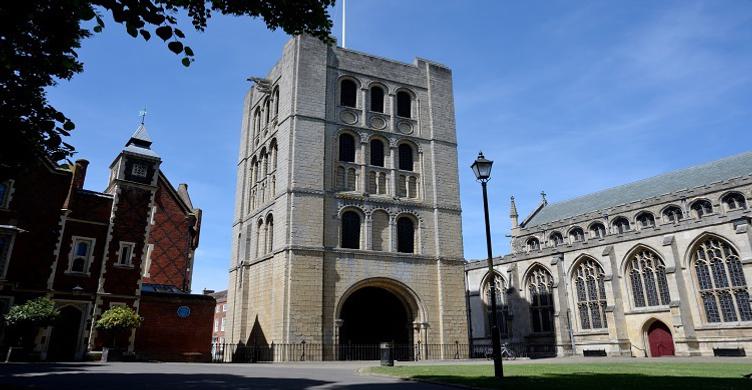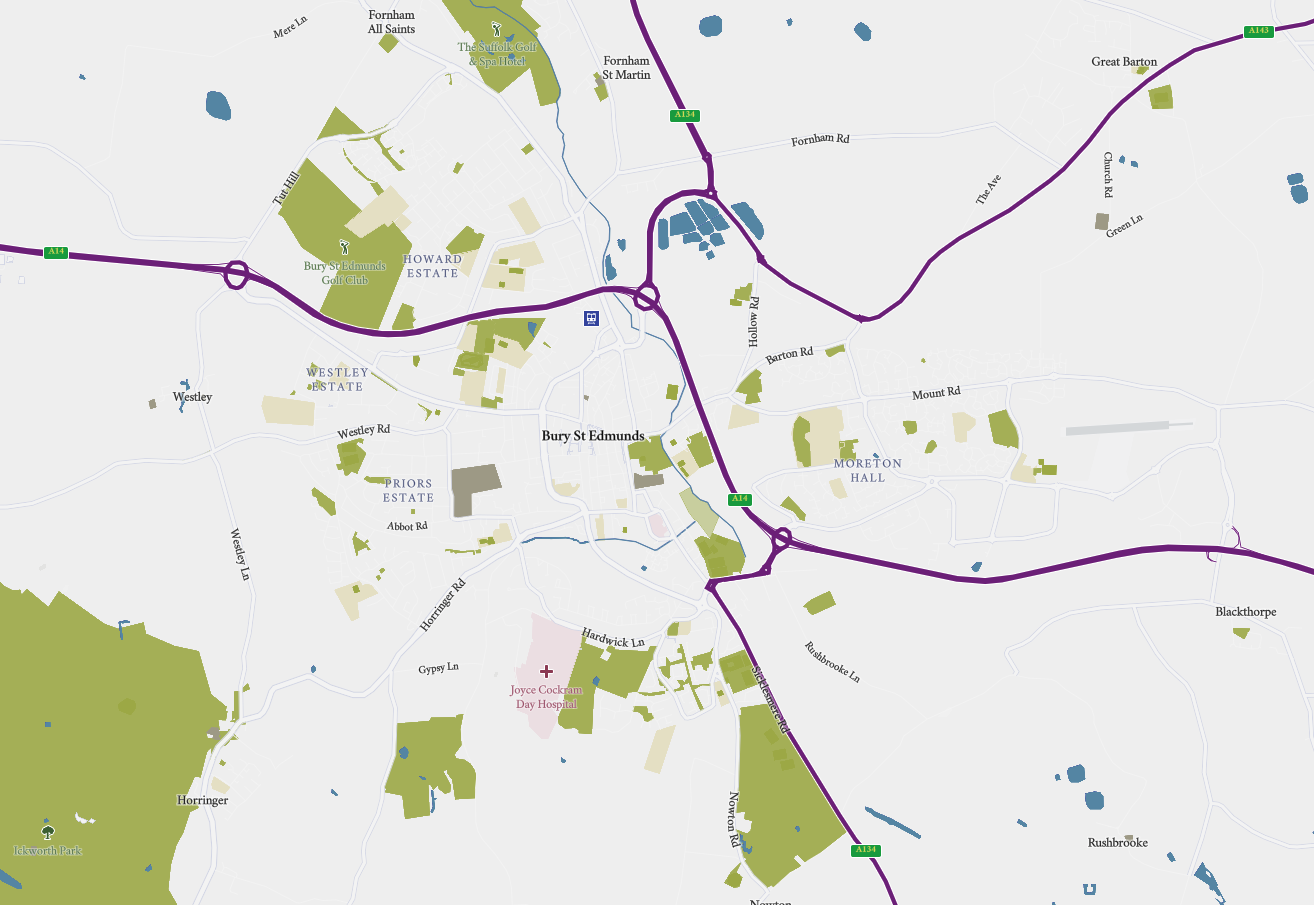The Norman Tower

About this Business
The Norman Tower, which was the principal gateway into Bury St Edmunds' great abbey church, houses a fine peal of twelve bells (with a thirteenth semitone bell) was built between 1120 and 1148 and is one of the oldest Norman buildings in England and one of the most complete Norman buildings in the UK as it has never been altered.
The original ten bells were cast by Thomas Osborn of Downham Market in 1785. The heaviest bell, the 'tenor', weighs just over 27 hundredweight and sounds a C# note.
In 1973 the bells were re-hung by Taylors of Loughborough in a cast iron frame lower down the tower, with their original wooden frame preserved higher up. In 2010 an appeal was launched to augment the bells to a cathedral ring of 12, and two new trebles (lighter bells) were dedicated on Easter Sunday 2012, then hung and rung for the first time on Easter Monday. In 2013, a 13th bell was added. This helps learner ringers, as there is a requirement to learn on 8 bells before progressing to higher numbers (10 and 12) - a ring of 10 bells contains within it only 1 true octave, that comprising the 8 heaviest bells, but the provision of a 13th (semitone) bell makes a lighter octave available in the ring of 12.
Approximately 175 full peals have been rung since records began in November 1879. The bells are rung on Sundays from 9.00 am for the 10 o'clock Eucharist, and quarter peals are regularly rung before Sunday evensong. The bells are also rung for weddings and other special occasions.
The tower is not open to the public. However it does open to the public for special events and the National Heritage Open Days event in September.

